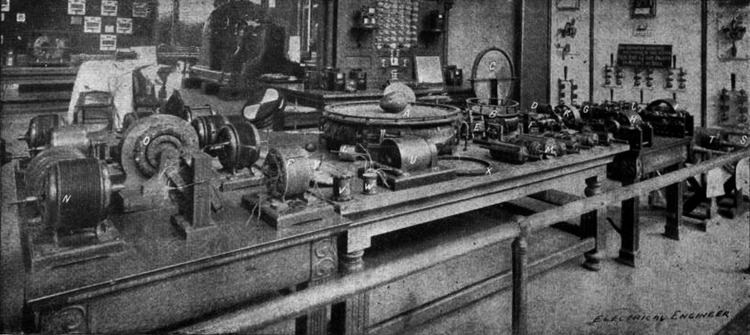 | ||
Nikola Tesla, at the 1893 World's Columbian Exposition, demonstrated a device he constructed known as the "Egg of Columbus." It was used to demonstrate and explain the principles of the rotating magnetic field model and the induction motor. It was also used to rotate armatures at great distances and speeds in the first demonstration of wireless power transfer.
Figure 297 (see article photo) shows a view of part of the exhibits containing the motor apparatus. Among these is shown at A a large ring intended to exhibit the phenomena of the rotating magnetic field. The field produced was very powerful and exhibited striking effects, revolving copper balls and eggs and bodies of various shapes at considerable distances and great speeds. This ring was wound for two-phase circuits, and the winding was so distributed that practically uniform field was obtained. This ring was prepared for Mr. Tesla's exhibit by Mr. C.F. Scott, electrician of the Westinghouse Electric and Manufacturing Company
Tesla's Egg of Columbus performed the feat of Columbus with a copper egg in a rotating magnetic field. The egg spins on its major axis, standing on end due to gyroscopic action.
Tesla's device used a toroidal iron core stator on which four electromagnetic coils were wound. The device was powered by a two-phase alternating current source (such as a variable speed alternator) to create the rotating magnetic field. The device operated on a frequency of 25 to 300 hertz. The ideal operating frequency was described as being between 35 and 40 hertz. Reproductions of the device are displayed at the Nikola Tesla Museum in Belgrade, the Memorial Centre "Nikola Tesla" in Smiljan, the Technical Museum in Zagreb, the Croatian History Museum in Zagreb and in the Ann Arbor Hands-On Museum.
